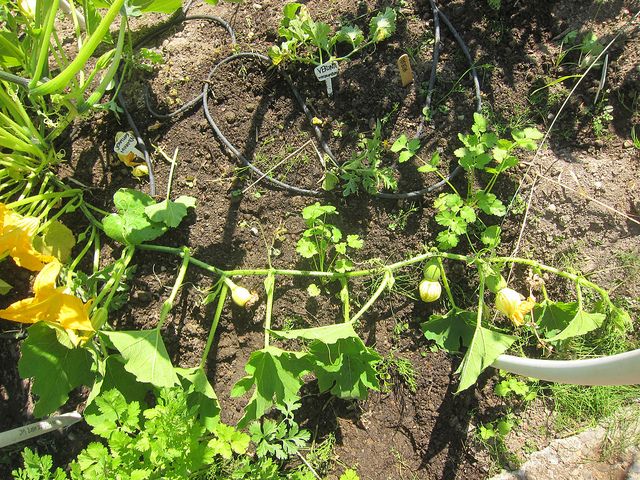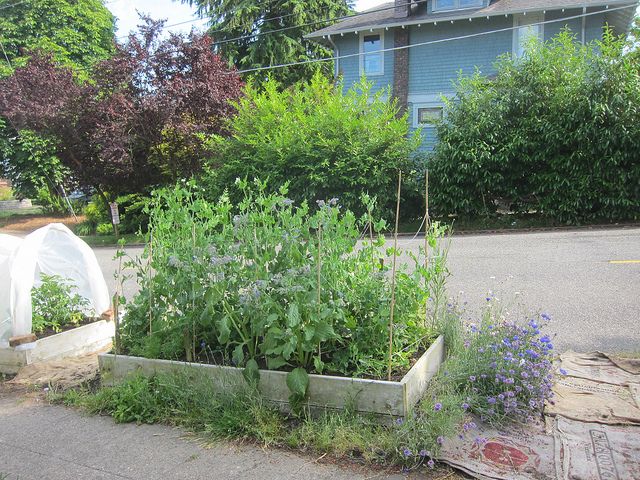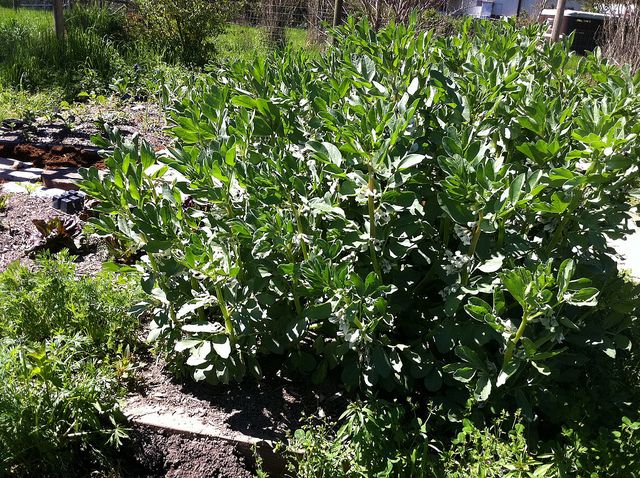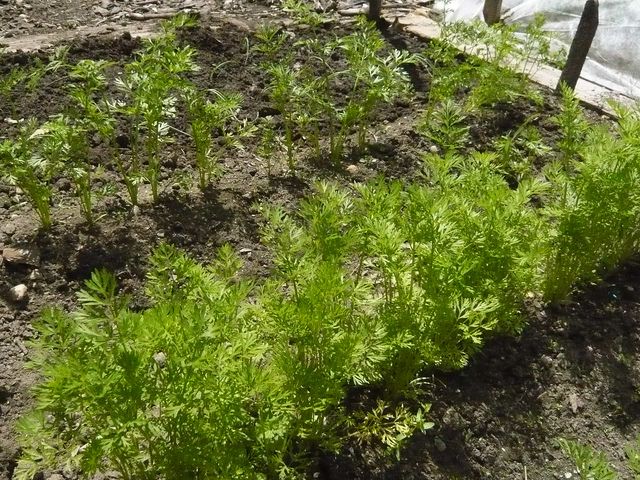This is the fourteenth in our biweekly series from Amy Pennington – urban farmer, founder of GoGo Green Garden, and author of Urban Pantry and Apartment Gardening – on how to start growing your own food, no matter how tiny your garden-to-be is.
Today: Amy shows us how to harvest plants from root to stem. Don't stop at eating fruits and vegetables -- eat pea vines, squash blossoms, and even tomato leaves!

— Amy
Urban farming implies that you’re growing in a small space, so maximizing that space with an eye toward production is the most practical way to grow and harvest food. Fortunately, many plants are a virtual buffet, with edible, harvestable parts from root to stem. You need only know what bits you can harvest and how to introduce them into meals for a progressive harvesting schedule that lasts for months. Today: a round-up of goodies to harvest and cook with -- a timely, seasonal guide for what to harvest now.

1. Pea Vines
Spring peas are on their way out (though in temperate climates, now is a great time to sow a second crop of peas for fall harvest), and it’s time to pull the plants out of the garden to make way for another crop rotation of summer lettuce, or a row or two of bok choy. Before tossing pea plants into your compost or yard waste bin (or feeding them to your chickens), consider using the last few inches of pea vine in your kitchen. Harvest them by cutting the topmost 6 to 12 inches of tender, thin vine from the plant.
These pea vines can be sautéed or tossed in to salads, but this late in the season the odds are greater that you’ll be harvesting woody, tougher stems from the plants. It may take a little effort to coax them into something delicious, but using every bit from the plant is economical for both your time and your budget. I have a great recipe for Pea Vine Dumplings -- try it! It’s a great recipe to double, as well: just freeze extra dumplings and use them for another meal or as a quick appetizer the next time you need to whip something up in a hurry.

2. Squashes
This is the perfect time of year for squash blossoms, and zucchini are shallow-rooted plants so anyone can grow a plant or two in containers. (Make note for next year, if you aren’t growing already!) All squash plants make flowers -- zucchini, pumpkin, winter squash, etc. Before you harvest squash blossoms, know that there are both female and male blossoms on every plant. Male blossoms grow at the end of a long, thin stem, and have a long stamen in the center of the blossom. Female blossoms have no stamen and will develop fruit -- you can see the to-be zucchini just under the flower's stems. They also tend to die a bit faster. If you’re harvesting squash blossoms, be sure to opt for the male blossom, leaving the females behind to grow zucchini. Stuff the blossoms with cheese and fry, fill them with seasoned rice or meat and bake in the oven, or cook them into a frittata. Some Mexican cultures use the squash blossoms for a thin tomato soup.
You can also use squash leaves in recipes. While they are edible, they can be a bit prickly and tough, so choose smaller leaves. Some Asian cultures sauté young tender leaves or curling vines. I have also used large squash leaves to cover and insulate squash gratins. They act as a gentle covering to keep vegetable gratins moist while the leaf on top chars to a crisp – a nice final combination of textures for a vegetarian meal.

3. Fava Tops
Fava beans have a long growing cycle, and anyone lucky enough to have space for these tall plants should plant a thick crop in the fall for an early summer harvest. While you wait for the fava bean pods to mature, snip liberally from the top of each plant -- about the last 4 to 6 inches, which are the most tender. Use these tops as you would pea vines: as a simple sauté or raw in a salad serve them best.

4. Tiny Carrots & Greens
If you’re growing carrots at home, you will need to thin them in order to make space for each individual carrot to mature. I try and thin carrots at the last possible moment -- this means that I harvest teeny tiny carrots and greens that can be used as garnish or, even better, pickled whole.
You can use carrot greens as you would parsley. The flavor is strong and slightly carrot-like, but the bitterness makes a nice counterpoint to fatty fish or meat -- use carrot greens in a gremolata with lemon peel next time you grill this summer. It is also worth noting that the older the carrot, the more bitter the green, so opt for thinned carrots or smaller tops when harvesting.

4. Tomato Leaves
It is widely supported that tomato leaves can be poisonous, as they’re in the nightshade family. Tomato leaves, however, are not dangerous if ingested in small quantities, and in fact can be used as an infusion, much like tea leaves. Tomato leaves add a level of depth to the flavor profile in a simple red tomato sauce. They can also be steeped in strained tomato water for a super fragrant cold summer soup or beverage. (I don't recommend eating them up three meals a day, but occasional use is just fine.)
Next up on City Dirt, it's all about tomatoes: caring for them, making your own trellises and tomato cages, and more!







See what other Food52 readers are saying.